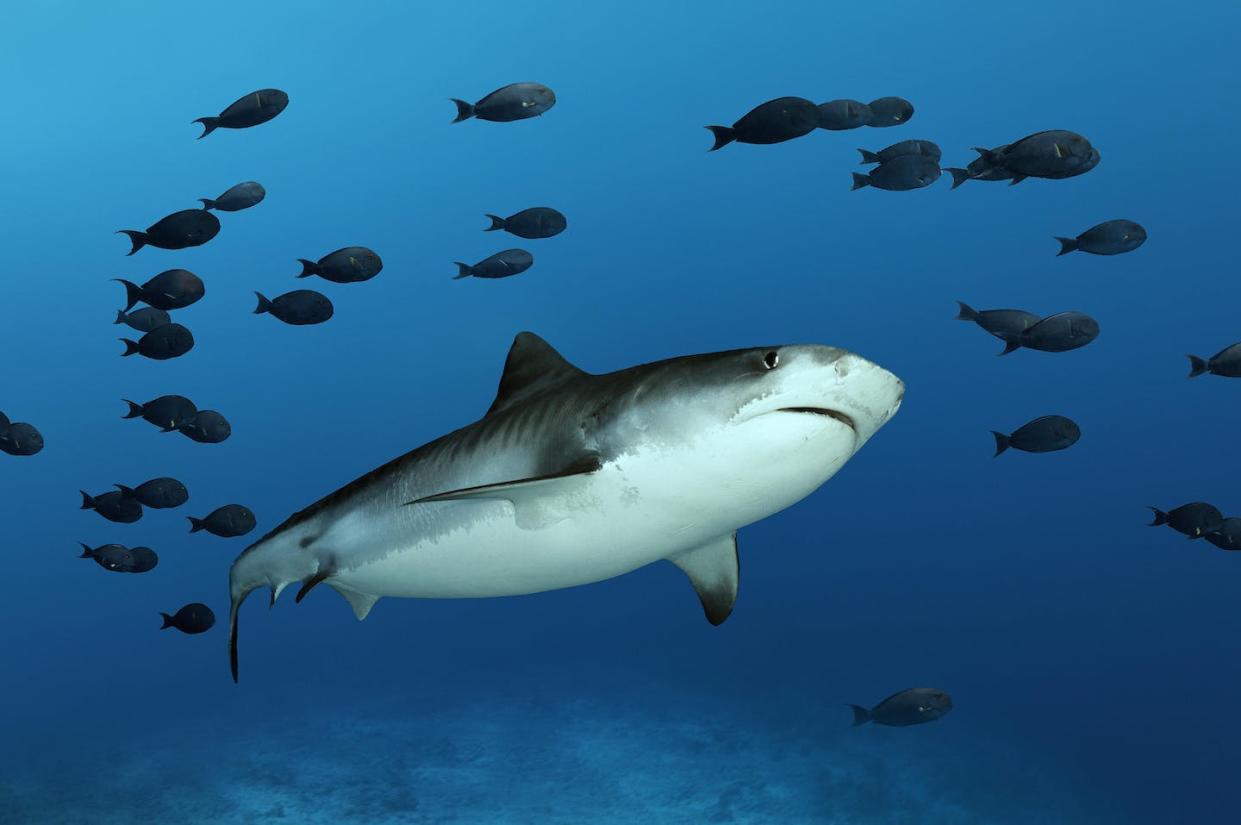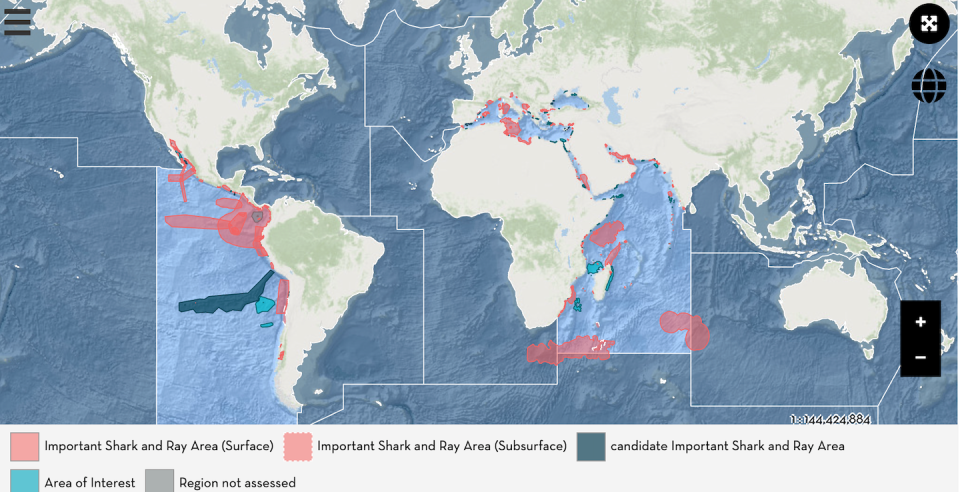To protect endangered sharks and rays, scientists are mapping these species' most important locations

All of the saltwater bodies on Earth make up one big ocean. But within it, there is infinite variety – just ask any scuba diver. Some spots have more coral, more sea turtles, more fish, more life.
“I’ve been diving in many places around the world, and there are few locations like the Fuvahmulah Atoll in the Maldives,” Amanda Batlle-Morera, a research assistant with the Important Shark and Ray Areas project, told me. “You can observe tiger sharks, thresher sharks, scalloped hammerheads, oceanic manta rays and more, without throwing out bait to attract them.”
Identifying areas like Fuvahmulah that are especially important to certain species is a long-standing strategy for protecting threatened land animals, birds and marine mammals, such as whales and dolphins. Now our team of marine conservation scientists at the Important Shark and Ray Areas project is using it to help protect sharks and their relatives.
I am a marine conservation biologist and the project’s communications officer. This initiative is working to identify locations that are critical for sharks and rays, so that these zones can be flagged for future protection or fisheries management measures.
Where the sharks are
Sharks and their relatives are some of the most imperiled animals on Earth: More than one-third of all known species are threatened with extinction. Many of these animals play vital roles in their ecosystems. Losing marine predators can destabilize entire food webs and the ecosystems that these food webs depend on.
In recent years, the management of sharks and their relatives, rays and chimaeras, has largely focused on curbing the impacts of fisheries and trade on these species. But their populations are still declining rapidly, so new strategies are needed.
To effectively protect these important and threatened animals, my colleagues and I believe it is vital to identify and protect parts of the ocean, plus some freshwater habitats, that are especially significant for their lives. Some areas, for example, are important migratory pathways, or feeding or mating grounds, or places to lay eggs.
Our team has created a list of technical criteria so that zones around the world can be examined and potentially designated as Important Shark and Ray Areas. We modeled these criteria on similar approaches that are already in use, such as important marine mammal areas, which we adapted to the specific needs and biology of sharks and their relatives.
We are now hosting a series of 13 regional workshops around the world and inviting local experts to nominate preliminary areas of interest for evaluation by our team and an independent expert review panel. So far, we’ve completed three workshops, one focusing on the Central and South American Pacific, another on the Mediterranean and Black seas, and the third on the Western Indian Ocean, with a workshop for Asia planned for early 2024.

After the workshops and expert reviews, each finalized Important Shark and Ray Area will be added to our e-atlas, which can be viewed online. Each region’s Important Shark and Ray Areas are published in a formal compendium, and the whole global process will be repeated every 10 years. This cycle will allow us to consider changes to areas that have already been mapped, such as new fishery policies or impacts from climate change, and to take into account new research that can help us identify new areas.
Informing conservation policies
We recently published our Mediterranean and Black seas region compendium, which reflects input from over 180 experts from around the region. It identifies 65 Important Shark and Ray Areas that range widely in size and habitat type. Our western Indian Ocean compendium includes over 125 areas.
These zones are important for species like the critically endangered blackchin guitarfish (Glaucostegus cemiculus), as well as heavily fished shark species like the common smoothhound shark (Mustelus mustelus).
Some of these areas, such as Benidorm Island off Spain’s Mediterranean coast, are in shallow coastal zones. Others, like the Cocos-Galapagos Swimway off Costa Rica and Ecuador, reach into deep ocean waters.
The smallest area identified so far, Israel’s Palmahim brine pools in the southeast Mediterranean, measures just 0.03 square miles (0.09 square kilometers) – about half the size of New York City’s Grand Central station. Blackmouth catsharks (Galeus melastomus) breed and lay eggs there, and threatened angular rough sharks (Oxynotus centrina) feed there, including on blackmouth catshark eggs.
The largest area is the Strait of Sicily and Tunisian Plateau, which extends over 77,000 square miles (200,000 square kilometers) – about the size of Great Britain – in the Mediterranean between Sicily, Malta, western Libya and Tunisia. This zone supports at least 32 species of sharks, rays and chimaeras, including many that are at risk of extinction, in habitats ranging from shallow seagrass beds to deep ocean trenches.
Identifying a location as an Important Shark and Ray Area does not mean it will automatically be protected. Our goal is to inform countries’ existing spatial planning and fisheries management processes and other conservation planning. Eventually, these zones may be incorporated into marine protected areas or other types of ocean preserves.
Sharks and their relatives need human help to survive and maintain their important biological roles in the ocean. Through the Important Shark and Ray Areas project, hundreds of scientists and other experts are helping to identify special places for these species that we believe need some extra attention.
Dr. Rima Jabado, chair of the IUCN Species Survival Commission Shark Specialist Group, contributed to this article.
This article is republished from The Conversation, a nonprofit, independent news organization bringing you facts and analysis to help you make sense of our complex world.
It was written by: David Shiffman, Arizona State University.
Read more:
David Shiffman does not work for, consult, own shares in or receive funding from any company or organization that would benefit from this article, and has disclosed no relevant affiliations beyond their academic appointment.

